Strawberry variety Kamrad Winner
Kamrad Pobeditel is a non-repairable variety of garden strawberries (strawberries) of medium late ripening, universal use. It is the brainchild of German breeders. Famous for its large-fruited, it belongs to the symbolic group of giant varieties. It is also appreciated for its good taste, excellent immunity to diseases and the ability to adapt to various climatic conditions. The variety is a "long-liver", it can be grown for about 7 years without renewal, while not reducing the yield and without losing its excellent taste.

The plant is vigorous, tall (35-40 cm), abundantly leafy, spreading. The mustache is powerful, thick, formed in small quantities. Leaves are wide, strongly corrugated, dark green in color. The flowers are large, white. Strawberry flower stalks are powerful, strong, very thick, located at the level of leaves or higher, under the weight of the fruit they are laid on the ground. Comrade Winner forms quite a few peduncles, in the first year of life only 1-2 pieces, in subsequent years - up to 6. Each of them can carry up to 10 berries.
The fruits of the variety are really huge, in the bulk of the comb-shaped form, they can be wide-conical, without a neck. The skin is bright red, shiny. Achenes yellow, shallowly depressed. The pulp is red, very firm but not firm, with a fleshy consistency, no voids, very juicy and aromatic. Strawberry taste is excellent. The berries are very sweet, but there is a subtle delicate acidity. In general, gardeners like the taste of the winner's Kamrad, but they admit that it is not particularly outstanding - the same as that of Gigantella, which is also not famous for any "zest" in the palate.
The fruits are versatile in use, excellent fresh, excellent for any processing and freezing. Thanks to their dense pulp, they are excellently transported and easily tolerate short-term storage. Outwardly, the berries look very impressive - not strawberries, but apples! In the market, of course, the Kamrad winner could be in great demand, but for commercial purposes it is grown extremely rarely, living mainly on the plots of gardeners and amateur collectors as a rare valuable specimen. Why is this the case? Let's figure it out.
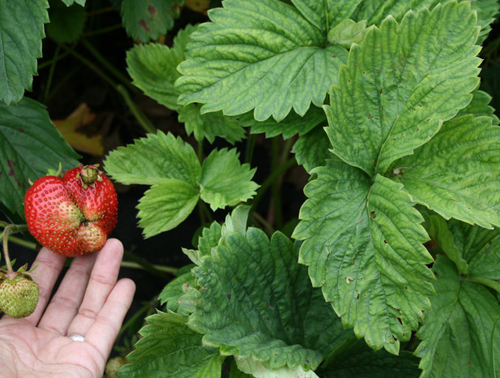
So, the giant variety forms really huge berries weighing from 60 to 150 grams, they can reach 7 cm in diameter. The largest specimens are observed during the first harvest, however, in subsequent fruits they are striking in size. It is worth saying that our hero is considered one of the largest-fruited, surpassing the famous Gigantella Maxim and recently popular Japanese masterpieces Chamoru Turusi and Tsunaki... But not everything is so rosy. In terms of yield, Kamrad the winner is inferior to the above-mentioned giant brothers, moreover, quite strongly. The fact is that, although his berries are large, there are very few of them. According to gardeners, strawberries form very few peduncles (as a rule, no more than three), and there are even fewer fruits on them - often one big "apple" ripens, sometimes 3-4 pieces can be observed. Thus, even if we assume that you are lucky and absolutely all the berries are gigantic, the yield will not exceed 1.5 kg per bush. And if you return to reality, then such an indicator will become just a dream. The maximum you can count on is up to 1 kg per plant. On average, the yield is about 500-800 grams. Of course, it depends on agricultural technology, so who knows, you may be able to collect more than 1.5 kg of berries from a bush. Of course, the sky-high 3 kg per plant, as the ad for Chamora Turusi and Tsunaki shouts, is better not even dreaming, although for these two Japanese women such a figure is also not entirely real, so you should not immediately take your eyes off the winner's Kamrad.

The variety ripens in the middle late, however, in different regions it can start the season both earlier and later, which sometimes leads to confusion - some consider this strawberry late, others - mid-season, others generally refer it to mid-early. Fruiting in the variety is one-time, but very extended. This happens because the berries ripen for a very long time. Gardeners complain that because of this nuance they do not have time to taste the harvest - insects, slugs, birds and other "neighbors" are already tasting it.
Comrade the winner has excellent immunity, and in general, he is very "tenacious", can easily exist on the site, even without leaving at all. But, of course, if you want to get tasty and bountiful harvests, then you should take care of the plants. Still, it is necessary to carry out preventive treatments against diseases and pests in a timely manner in order to avoid surprises. By the way, this strawberry is very fond of various residents of the site - insects, birds, mice, moles. Therefore, take all the necessary measures to keep the crop from extra mouths.
The variety has quite decent winter hardiness; in the northern regions, it hibernates quite well under cover, without lunges. Spring frosts are also not particularly scary for plants. The drought resistance of strawberries is high, as is the heat resistance, which makes it very attractive for cultivation in southern regions with hot summers. Of course, in order to obtain the best yield, it is necessary to provide the plants with regular abundant watering, and it will not be superfluous to think about shading the plantings in order to protect the berries from the scorching sun.
In agricultural technology, the variety is quite standard, it requires the most basic care measures. The winner's comrade can be attributed to the “strawberry for the lazy” group, but one should not expect excellent yields with minimal attention to plants. The main thing that needs to be emphasized is to provide the plantings with sufficient nutrition. This is especially important if you want to see apple-sized berries on the bushes. The main preference is given to mineral complexes, organic matter is introduced before planting and before flowering. Another agrotechnical nuance is to avoid excessive thickening. Considering the size of the bushes, they should be planted at a distance of 50 cm, it is better to leave 70 cm in the row spacing.This planting scheme cannot be called compact, so a reasonable question arises - maybe it is better to plant two bushes of a different variety in a certain area? If you are interested in a larger yield of berries per square meter of area, then it is definitely worth it. But since our hero is currently more of a "museum exhibit", we will not talk about commercial cultivation in pursuit of yield.
The variety is prized for its longevity. It can bear fruit stably for 5-7 years of use, retaining the excellent taste of the berries and quite good yield. In fact, at present this quality is quite rare, especially for very large-fruited varieties, so the winner's Kamrada can be called to some extent special among the assortment of giant varieties.
What I would like to say at the end. This strawberry is very good, has decent taste, is unpretentious in care, and perfectly resists various diseases. And for those who want to have on their site a curiosity that bears fruit-apples, and besides, not "foamy" to the taste, Kamrad the winner will be a good purchase. Unfortunately, it is not particularly promising for commercial cultivation, and many gardeners have abandoned it due to insufficient yield. But for connoisseurs of varieties that differ from the mass of others, our hero is very attractive and will become a wonderful unique "highlight" on the site.

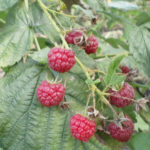
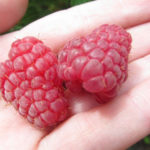

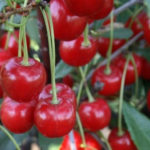
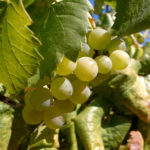



My mother is “crazy” about garden strawberries in our family - a “collection” of 62 varieties is growing on our site. All plants by variety (from trusted suppliers) - there are Gigantella, Tsunaki, and Chamora, to be honest - I don't see much difference in appearance, taste and size of berries (they are all like twin brothers). About the variety I can say - beautiful, large-fruited, but low-yielding. To get marketable berries, the bushes need to be heavily fed and watered, and they are much larger in size than indicated in the article.